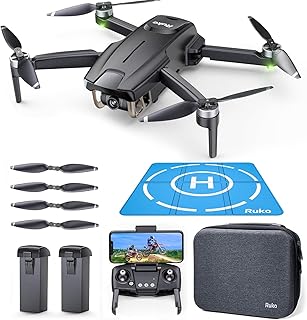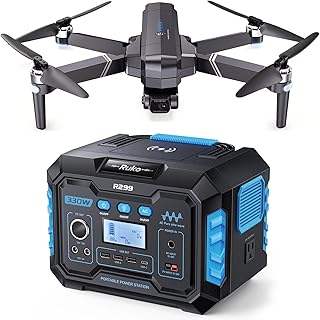Ruko Drone: Exploring the Future of Aerial Photography and Videography
While there's no drone manufacturer named "Ruko", I assume you're interested in discussing drones in general and their potential impact on aerial photography and videography. Let's explore this topic together.
Drones are undoubtedly transforming the world of aerial capture:
* Accessibility: Drones make aerial photography and videography more accessible than ever. They're significantly cheaper than traditional methods like helicopters, and user-friendly software makes them easier to operate.
* Versatility: Drones can reach tight spaces, capture unique angles, and offer perspectives previously unavailable. This opens doors for various applications, from real estate photography to wildlife documentaries.
* Innovation: Drone technology is rapidly evolving, with advancements in camera quality, flight time, and autonomous capabilities pushing boundaries.
Here's how drones are shaping the future of aerial photography and videography:
* High-Resolution Imagery: Drones now boast cameras capable of capturing stunning 4K and even 8K video, with high dynamic range and exceptional detail. This allows for breathtaking visuals and cinematic quality.
* Advanced Features: Features like obstacle avoidance, GPS tracking, and automated flight patterns enhance safety and creativity, making drone photography more reliable and efficient.
* Real-time Data Collection: Drones can integrate with sensors and software to gather data like temperature, air quality, and even terrain maps, opening possibilities for environmental monitoring and disaster response.
* New Artistic Expression: Drones empower artists to explore unique perspectives, create immersive experiences, and tell stories in new and innovative ways.
However, challenges remain:
* Regulations: Drone usage is subject to regulations that vary between countries and regions. Navigating these rules is crucial for responsible and legal operation.
* Privacy Concerns: Drones have raised ethical concerns about privacy and data collection, requiring careful consideration of responsible use and ethical guidelines.
* Technological Limitations: Despite advancements, drone technology still faces limitations like battery life, weather conditions, and potential signal interference.
Overall, drones are poised to revolutionize aerial photography and videography. As technology advances and regulations evolve, drones will play an increasingly significant role in storytelling, data collection, and artistic expression.
To further explore this topic, consider these factors:
* Specific Drone Manufacturers: Research leading drone manufacturers like DJI, Parrot, and Autel for their latest models and technological advancements.
* Drone Photography and Videography Communities: Connect with online communities and forums where enthusiasts share tips, techniques, and inspiration.
* Drone Regulations and Best Practices: Familiarize yourself with local regulations and ethical guidelines to operate drones safely and responsibly.
By staying informed and embracing innovation, you can harness the power of drones to create stunning aerial content and push the boundaries of visual storytelling.


